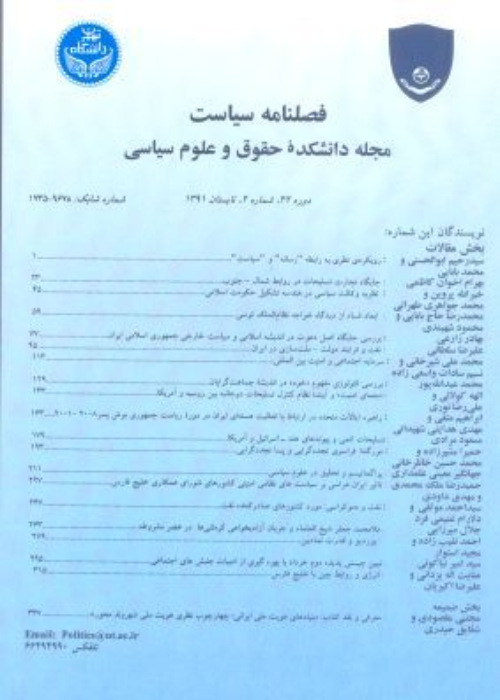The Challenges of Iran-China 25-year Comprehensive Cooperation Plan, with an Emphasis on the Alliance Security Dilemma
On March 2021, Iran and China signed an agreement as part of the Chinese Grand strategy, best known as Belt and Road Initiatives (BRI), which is a long-term plan to enable the Chinese government to project its power in the three continents of Asia, Africa and Europe by the 100th anniversary of the founding of the Communist Party of China, and its revolution in 2049. A qualitative content analysis of the unofficially published agreement shows that it goes beyond the perceived position of Iran in the BRI and echoes Iran’s national development plans. If it means that China would become an engine of growth for Iran, there might be strategic reasons for the Chinese side to accept such a commitment. Thereupon, the main research question is as follows: Given the unequal power position of the two countries in the international system, what would be the primary challenges facing Iran as they relate to the Iran-China 25-year Comprehensive Cooperation Plan? It is widely argued that the main challenge of alliance is its security dilemma which include the two dimensions of autonomy/security and entrapment/abandonment paradoxes. In the research hypothشesis, it is postulated that the creation of a balance of power and strengthening common interest is likely to lead to a kind of interdependence between the two superior and weaker countries, and will prevent the emergence of the security dilemmas of alliances. The method used in the paper is the qualitative content analysis by which the researcher is able to objectively and systematically explain the content of any document such as the Sino-Iran Agreement. This method of analysis will be used to reveal the potential challenges facing the Iranian side as a result of signing the agreement. In general, states’ primary interest inherent in their objectives to form an alliance might be classified as follows: a) to restore the balance of power, from a realist perspective; and b) to counterbalance against a perceived balance of threat. There are two issues that are associate with the alliance security dilemma; the first one is that in the absence of power parity, maintaining the security of the inferior state by the superior one would be at the expense of the autonomy of the inferior partner, particularly in its security decision-making process. The second one is that if the superior state strives to provide a security umbrella for the inferior state, it might be entrapped into an unwanted conflict with other Great Powers. Of course, if the powerful state fails to protect its ally against other influential states, the inferior partner consequently may decide not to stay in the alliance, and choose the abandonment as its best option. The issues that threaten all alliances are security dilemmas or predicament situation for the states which are in the alliance. These are daunting challenges for the main decision-makers who must decide when, in what situations, how, and with what outcomes to enter an alliance or withdraw from it. In general, three factors should be considered: what are the needs for the formation of an alliance, to what extent the alliance partners would meet those needs, and what are the actual terms and conditions of the contract forming the alliance. In the conclusion, it is argued that since one of the guiding principles of IRI’s foreign policy is the rejection of all forms of domination, it is of paramount importance not to rely on the East (e.g., China) in an attempt to avoid impressive pressures of the West. By considering the costs and benefits of the challenges posed by the agreement, Iran can avoid the alliance security dilemma, lower the likelihood of one-sided dependency by emphasizing dual deterrence from the West and East in accordance with the principles of Iran’s foreign policy. Accordingly, Iran urgently needs to re-evaluate all factors involved in the alliance-formation process, particularly the alliance needs, and the expected outcomes of the terms specified in the text of the bilateral agreement.
- حق عضویت دریافتی صرف حمایت از نشریات عضو و نگهداری، تکمیل و توسعه مگیران میشود.
- پرداخت حق اشتراک و دانلود مقالات اجازه بازنشر آن در سایر رسانههای چاپی و دیجیتال را به کاربر نمیدهد.



